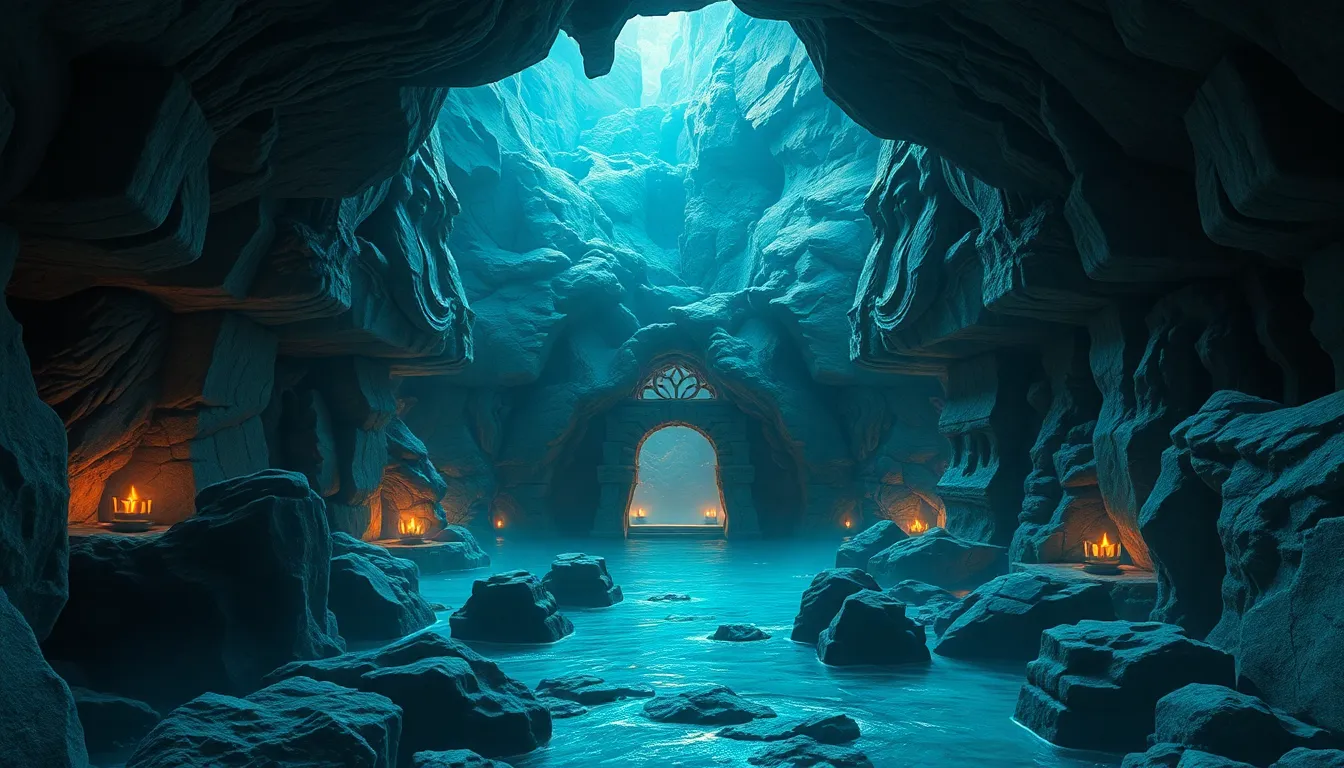The Underworld: Myths That Explore the Depths of the Soul
Introduction: Understanding the Underworld in Mythology
The concept of the Underworld has fascinated humanity for centuries, representing a realm that exists beyond the physical world. In mythology, the Underworld is often depicted as a place where souls go after death, a domain that serves as a bridge between life and the afterlife. It is a space of mystery, fear, and transformation, featuring prominently in the narratives of many cultures around the globe.
The importance of the Underworld in various cultures cannot be overstated. It serves not only as a location for the dead but also as a symbol for the depths of the human psyche. Myths surrounding the Underworld often explore themes of personal transformation, the struggle between good and evil, and the quest for understanding one’s self. This article will delve into the historical context, symbolism, key myths, and psychological interpretations associated with the Underworld, shedding light on its significance in both ancient and modern contexts.
The Historical Context of Underworld Myths
Throughout history, ancient civilizations have held diverse perceptions of the Underworld, often reflecting their spiritual beliefs and societal values. The Underworld’s depiction varies significantly across cultures, with notable examples including:
- Mesopotamian Underworld: Often viewed as a gloomy, dreary place known as Kur, where the dead led a shadowy existence.
- Egyptian Underworld: Known as Duat, this realm was seen as a complex space where the deceased underwent trials before reaching the afterlife, governed by Osiris.
- Greek Underworld: Ruled by Hades, this domain included various regions such as Elysium and Tartarus, reflecting different fates based on one’s life choices.
- Norse Underworld: Hel, ruled by the goddess Hel, was a place for those who did not die in battle, emphasizing a different view on honor and valor.
Over time, these myths have evolved, influenced by societal changes and cultural interactions, shaping the way we understand life, death, and the journey of the soul.
The Symbolism of the Underworld
The Underworld serves as a powerful representation of the unconscious mind, embodying the fears, desires, and unknown aspects of the self. It is often associated with:
- Death: The end of physical existence but also a necessary step towards transformation.
- Rebirth: Many myths depict the Underworld as a place where souls are reborn or undergo significant change.
- Darkness and Light: A duality that reflects the human experience, where darkness may symbolize despair, and light represents hope and enlightenment.
These themes resonate deeply within mythological narratives, illustrating the complex relationship between life and death, and the inherent journey towards self-discovery.
Key Myths Featuring the Underworld
Several prominent myths from different cultures highlight the significance of the Underworld regarding the soul:
- The descent of Inanna: In Sumerian mythology, Inanna descends to the Underworld to confront her sister Ereshkigal. This journey symbolizes the cycle of life, death, and renewal, as Inanna’s eventual return signifies rebirth.
- Orpheus and Eurydice: In Greek mythology, Orpheus’s journey to the Underworld to retrieve his beloved Eurydice exemplifies love’s power and the tragic consequences of human longing and loss.
- The journey of the dead in Egyptian mythology: The Egyptian belief in the afterlife involves the soul’s journey through Duat, where it faces judgment by Osiris, highlighting the importance of moral living and the pursuit of truth.
Each of these myths provides insight into the human experience, emphasizing themes of love, sacrifice, and the eternal quest for understanding beyond death.
Archetypes Associated with the Underworld
Certain archetypes have emerged in relation to the Underworld, particularly in the context of the Hero’s Journey:
- Charon: The ferryman who transports souls across the river Styx, representing the transition between life and death.
- Hades: The god of the Underworld, symbolizing the inevitability of death and the mysteries associated with the afterlife.
- Osiris: The Egyptian god of the afterlife, embodying resurrection and the hope of eternal life.
- Hel: The Norse goddess who governs the realm of the dead, illustrating the varied fates of souls based on their life choices.
Additionally, demons and spirits often play roles in these narratives, serving as guardians or obstacles in the soul’s journey, emphasizing the struggle between light and dark forces.
Psychological Interpretations of Underworld Myths
Psychologists, especially Carl Jung, have explored the meanings behind Underworld myths, connecting them to the collective unconscious. Jung believed that these narratives reflect our personal psychological struggles, representing the inner conflicts we face throughout our lives. For instance:
- Myths can symbolize the confrontation with our fears and shadows, essential for personal growth.
- They highlight the transformative power of facing one’s inner darkness, leading to healing and understanding.
- Modern psychology often uses these myths therapeutically, allowing individuals to explore their own journeys through symbolic narratives.
Cultural Variations in Underworld Beliefs
Different cultures offer a rich tapestry of beliefs regarding the Underworld. A comparative analysis reveals:
- Ancestor worship: Many societies emphasize the importance of honoring ancestors, reflecting a belief in the ongoing connection between the living and the dead.
- Afterlife beliefs: Various cultures have unique views on what happens after death, ranging from reincarnation to eternal judgment.
- Journey of the soul: Cultures differ in their perceptions of the soul’s journey, influencing their rituals and practices surrounding death and mourning.
These variations highlight the diverse ways humanity grapples with the concepts of mortality and the afterlife.
Modern Adaptations and Interpretations of Underworld Myths
In contemporary literature and media, the Underworld continues to be a compelling theme. Examples include:
- Film: Movies like “Hercules” and “The Fall” creatively reinterpret Underworld myths, making them accessible to modern audiences.
- Literature: Novels such as “The Divine Comedy” and “The Metamorphosis” draw upon Underworld themes, exploring the human condition and existential questions.
- Art: Artists often depict scenes from Underworld myths, using visual media to convey the depth of human emotion and the struggle between life and death.
These adaptations reflect the ongoing relevance of these myths in the context of our evolving understanding of the soul and the human experience.
Lessons from Underworld Myths for Contemporary Life
Underworld myths offer valuable lessons for our spiritual journeys today. Key takeaways include:
- Understanding the nature of death can enrich our appreciation for life and motivate us to live more fully.
- The journey through the Underworld symbolizes the necessary trials we face in personal growth.
- These myths encourage us to confront our fears and embrace transformation, ultimately leading to a deeper understanding of ourselves.
Conclusion:
The Underworld remains a profound symbol in mythology, representing not only the realm of the dead but also the depths of the human soul. Through historical exploration, symbolic interpretation, and psychological understanding, we uncover timeless truths about transformation, existence, and the eternal journey of the soul. By engaging with these myths, we can glean insights into our own lives, fostering personal growth and a deeper connection to the universal human experience.



